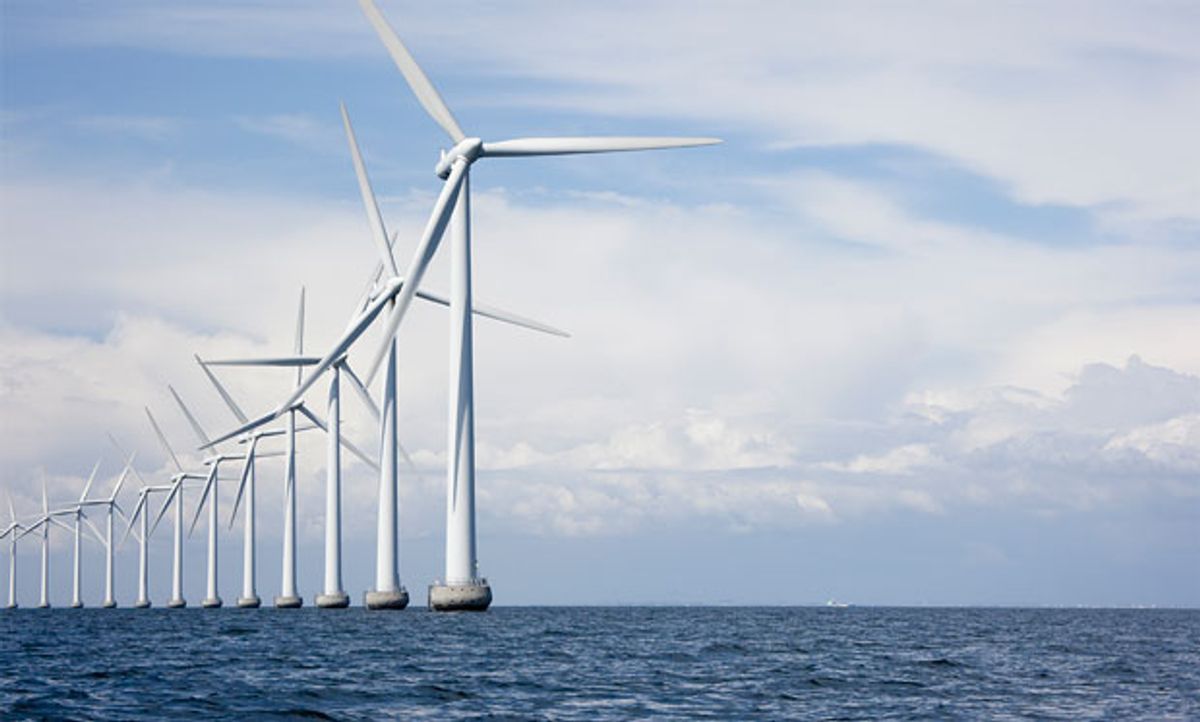Around this time last year, engineers were preparing to hoist the first superconducting wind turbine generator to the top of a tower in Denmark. The turbine capped an ambitious group of European efforts to find a way to increase the power of offshore turbines without making them too massive to build. Now it’s the United States’ turn. The U.S. Department of Energy will dole out up to US $8 million for three advanced-drivetrain efforts, two of which rely on superconductors.
Ayer, Mass.-based American Superconductor Corporation (AMSC) will build a generator based on high-temperature superconductors (HTS), which lose their resistance at around 77 kelvins. General Electric Research, in Niskayuna, N.Y., will develop a generator using low-temperature superconductors, leveraging its experience using liquid helium to cool the materials to below 10 K in MRI machines.
World leaders are gathering in New York City today for the United Nations Climate Action Summit, where they’re expected to present realistic plans to limit global warming to no more than 1.5 degrees Celsius. (The global temperature has already risen 1 degree C above preindustrial levels, according to the Intergovernmental Panel on Climate Change.) Big boosts to wind energy are likely to be part of such plans, and bigger, more powerful wind turbines are what’s wanted for offshore wind farms.
The cost of energy is tightly bound to the area that the turbine blades sweep. GE is deploying the world’s biggest wind turbine, the 12-megawatt Haliade X, which can single-handedly power more than 6,000 U.S. homes for a year, potentially displacing 23,000 metric tons of coal and limiting climate change.
But today’s most advanced commercial technology, the direct-drive generator—a gearless machine that uses a massive ring of permanent magnets based on rare earth elements—may eventually reach its limits. “We don’t know exactly what the upper limit is, but at some point they’ll be so massive that we can no longer get them on top of the tower,” says GE Research principal engineer David Torrey.
The Energy Department is looking for technology that will reduce generator mass by at least 35 percent, boost efficiency by 1 or 2 percent (a bigger deal than it might seem), and boost the generator’s torque density—force per unit of mass—by 35 to 50 percent. Coils of superconductor could replace permanent magnets to achieve those goals.
Using superconductors, which are inherently expensive materials that require costly cooling, will likely lead to a more expensive generator. However, the generator should still contribute to a minimum 10 percent reduction in the levelized cost of electricity, or LCOE, the break-even price of electricity over a generator’s lifetime.
“By driving performance metrics that include weight and efficiency, it is possible that a more expensive generator system could reduce the overall LCOE of a wind plant,” explains Mike Derby, wind technology program manager at the Office of Energy Efficiency and Renewable Energy.
The cost of cooling will be critical to reaching those goals, suggests Asger Bech Abrahamsen, senior researcher in the department of wind energy at Technical University of Denmark. He should know, having led the drivetrain work for one of the biggest European efforts, the five-year-long, €20 million InnWind project.
Both AMSC and GE think they have a handle on that problem. AMSC, which has commercialized two high-temperature superconductor technologies, acquired cryocooler firm Infinia Technologies in 2017. “We now control all the technology around the cryogenics,” says AMSC CEO Daniel P. McGahn. “We have developed some very specific ideas…that we think reduce the risks around the cooling system.” The cryocoolers are currently used in an onboard superconducting system that masks the magnetic signature of Navy ships, hiding them from mines.
AMSC’s technology is based around a proprietary high-temperature superconductor called Amperium. Using high-temperature materials should reduce the cost of cooling because the temperature to be maintained is less demanding. However, they are generally more expensive than low-temperature superconductors. The cost of the high-temperature superconductor used in the InnWind designs—magnesium diboride—led to the need to reduce the amount of the material in their design. And that led to a need for more magnetic steel to concentrate the magnetic field, adding unwanted weight to the system.
Both GE’s cryocooling prowess and its superconductors come from its experience building MRI machines, where niobium-titanium superconductors must be kept below 10 K using liquid helium to produce superstrong magnetic fields. “The wire that we’re using is the same wire that goes into all the MRI machines—made not just by GE but by our competitors,” says Torrey. He says it’s less expensive than competing high-temperature superconductors by two orders of magnitude.
GE is also counting on its liquid-helium-based MRI cooling system for its wind turbine design. A new heat transfer technology in use in some MRIs reduces the amount of helium needed by a factor of 100, Torrey says, essentially allowing the helium to be sealed in for the life of the generator. “That development went a very long way to convincing us that a superconducting generator would be commercially viable,” he says.
The two teams are not yet at the point where they’ve definitely settled on a particular power output to target, but the Energy Department wants something that will scale beyond 10 MW. InnWind targeted both 10 MW and 20 MW designs, and unexpectedly, a dark-horse nonsuperconducting technology wound up as the lowest-cost design. The Energy Department clearly is open to that possibility. The agency is also funding WEG Energy, in Duluth, Ga., which is working on a better permanent-magnet-based technology.
Editor’s note: This story is published in cooperation with more than 250 media organizations and independent journalists that have focused their coverage on climate change ahead of the U.N. Climate Action Summit. IEEE Spectrum’s participation in the Covering Climate Now partnership builds on our past reporting about this global issue.
Samuel K. Moore is the senior editor at IEEE Spectrum in charge of semiconductors coverage. An IEEE member, he has a bachelor's degree in biomedical engineering from Brown University and a master's degree in journalism from New York University.



